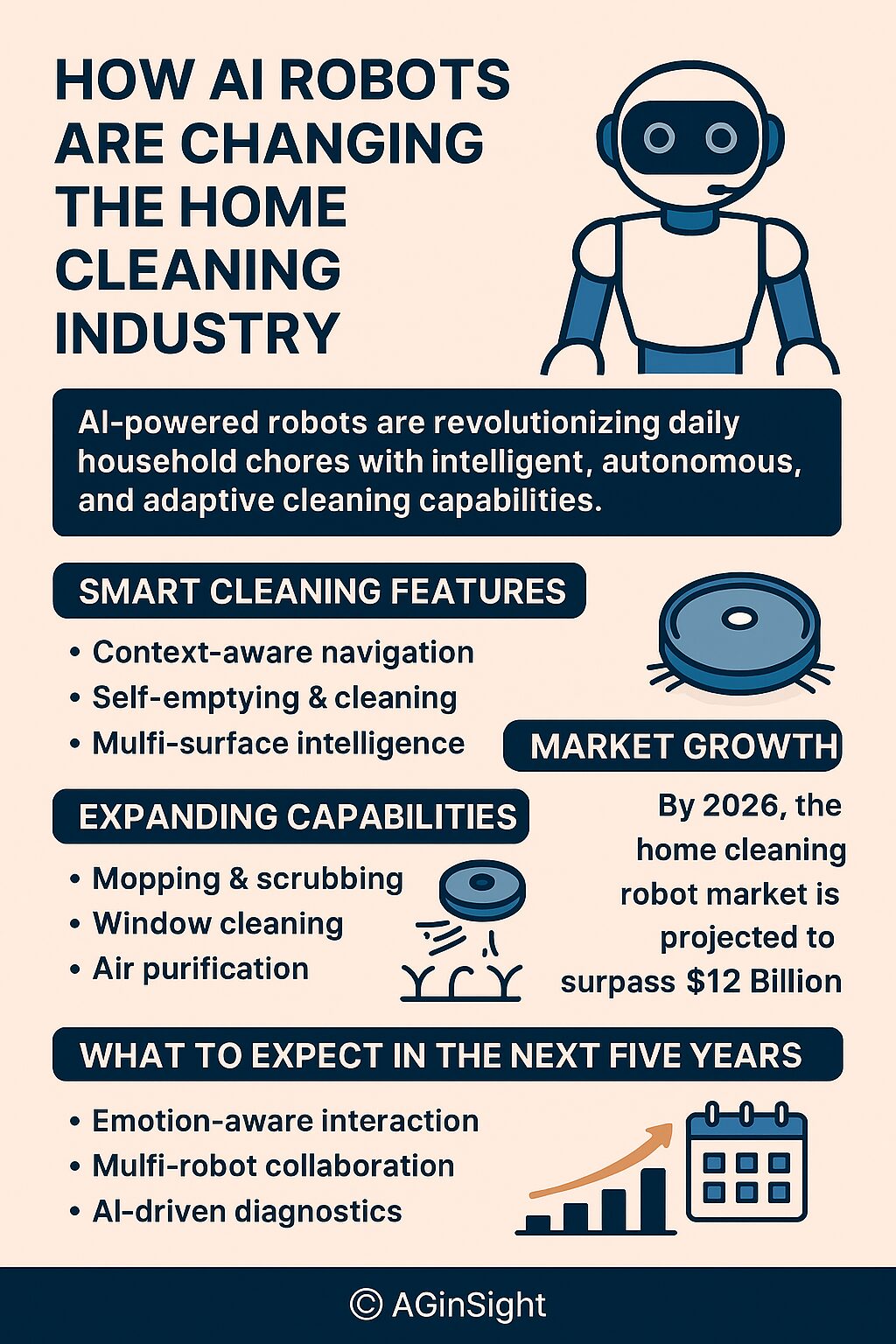AI-powered robots are transforming the home cleaning industry, offering smarter, faster, and more personalized solutions for households worldwide. In 2025, these intelligent machines are no longer luxury gadgets—they’re essential tools reshaping domestic life. Here’s how AI robots are changing the home cleaning industry and what consumers can expect next.
🤖 The Rise of AI-Powered Cleaning Robots
AI cleaning robots have evolved far beyond simple vacuuming. Today’s devices use machine learning, computer vision, and sensor fusion to navigate complex environments, adapt to user preferences, and deliver precision cleaning.
Key innovations include:
- Context-aware navigation: Robots like SwitchBot’s AI Hub use real-time data to adjust cleaning based on room usage and dirt levels.
- Multi-surface intelligence: Devices now detect and switch between carpet, tile, and hardwood automatically.
- Self-emptying and self-cleaning systems: Models like Ecovacs’ Deebot X11 OmniCyclone offer “nonstop cleaning” with rapid charging and autonomous waste disposal.
🧼 Expanding Capabilities Beyond Vacuuming
AI robots are now tackling a wider range of household tasks:
- Mopping and scrubbing: Dual-function robots clean both dry and wet surfaces with precision.
- Window cleaning: AI-guided suction bots scale glass surfaces safely and efficiently.
- Air purification and dust detection: Integrated sensors monitor air quality and trigger cleaning cycles.
These features make AI robots ideal for homes with pets, children, or allergy-sensitive residents.
📈 Market Growth and Consumer Adoption
The global home cleaning robot market is expected to surpass $12 billion by 2026, with the U.S., UK, and Asia-Pacific leading adoption. Factors driving growth include:
- Busy lifestyles and demand for convenience
- Aging populations seeking assistive technologies
- Smart home integration with platforms like Alexa and Google Home
According to Well Polished UK, households are embracing AI cleaning not just for time savings, but for hygiene, sustainability, and peace of mind.
🏠 Smart Home Ecosystem Integration
AI cleaning robots are increasingly part of a connected home:
- Voice control via smart assistants
- App-based scheduling and customization
- Data-driven cleaning reports for performance tracking
This integration allows users to automate routines, monitor cleanliness, and optimize energy use.
🔮 What to Expect in the Next Five Years
By 2030, home cleaning robots will feature:
- Emotion-aware interaction for personalized service
- Collaborative multi-robot systems for large homes
- AI-driven maintenance alerts and predictive diagnostics
- Eco-friendly materials and energy-efficient designs
These advancements will make AI cleaning robots indispensable household companions.

